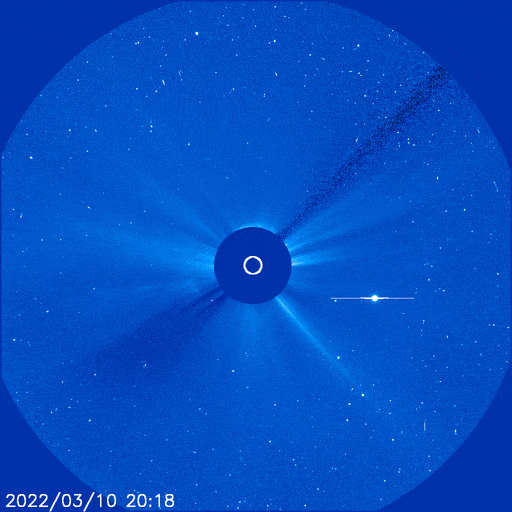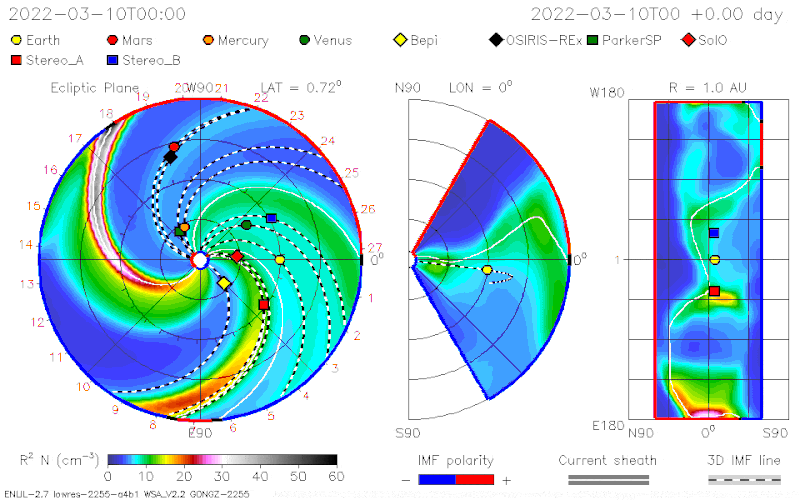A long-lasting solar flare took place near the large sunspot region AR2960 on March 10, 2022.
It produced an Earth-directed coronal mass ejection (CME). The estimated arrival time for charged particles from the sun is 11:35 UTC (plus minus 7 hours) on March 13.
That means auroral activity might increase tonight (the night of March 12-13) for observers in the Western Hemisphere.
The estimate comes from the NASA ENLIL solar wind / CME model, used by scientists.
The impact is estimated to be between Kp=5 to 8 or geomagnetic storm from minor (G1) to severe (G4).
This will be a direct hit of Earth by a large CME.
The resulting geomagnetic effects have the potential to provide a beautiful auroral show.
Source
It produced an Earth-directed coronal mass ejection (CME). The estimated arrival time for charged particles from the sun is 11:35 UTC (plus minus 7 hours) on March 13.
That means auroral activity might increase tonight (the night of March 12-13) for observers in the Western Hemisphere.
The estimate comes from the NASA ENLIL solar wind / CME model, used by scientists.
The impact is estimated to be between Kp=5 to 8 or geomagnetic storm from minor (G1) to severe (G4).
This will be a direct hit of Earth by a large CME.
The resulting geomagnetic effects have the potential to provide a beautiful auroral show.
Source























